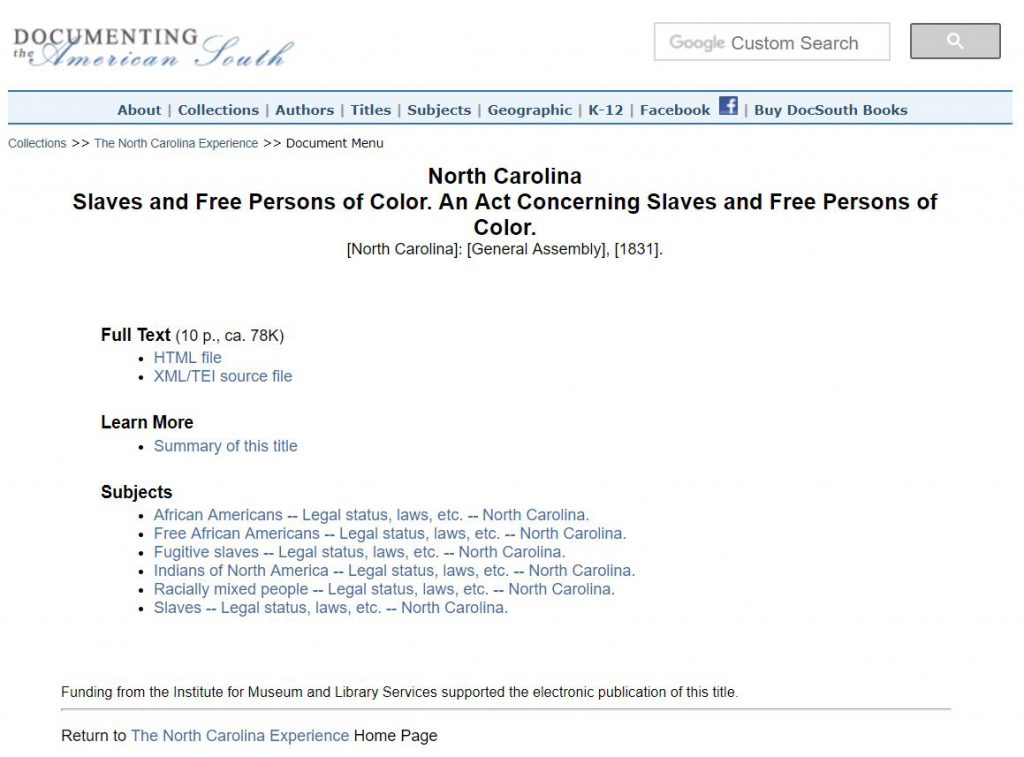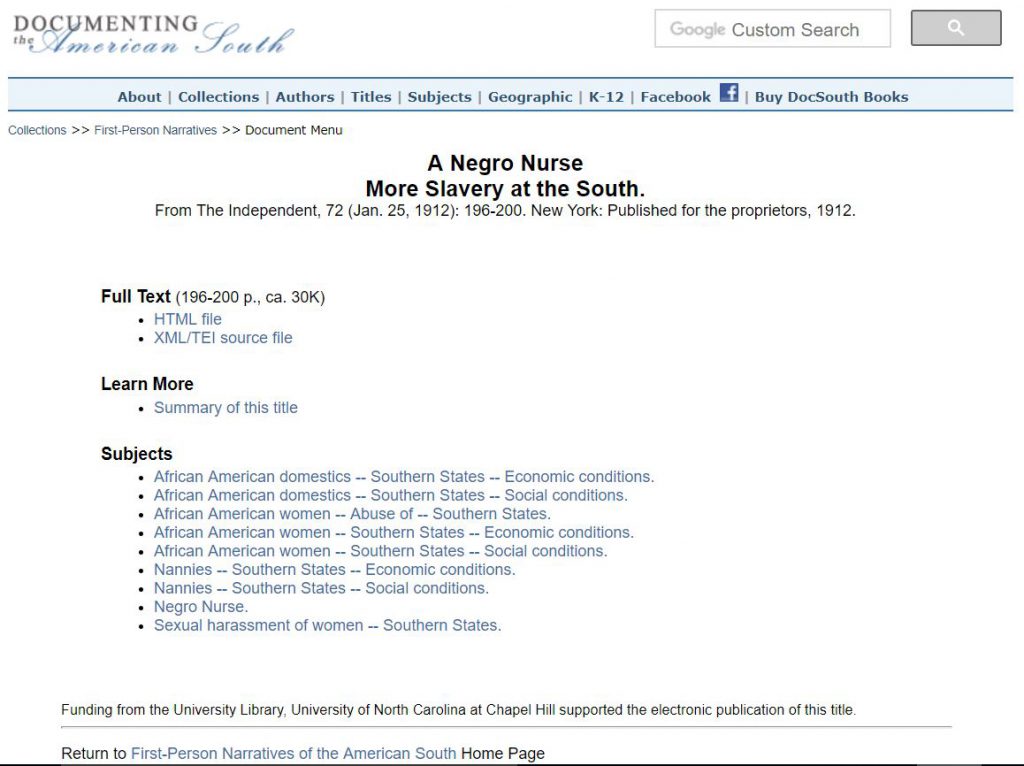After multiple class sessions introducing our archival and manuscript collections and oral history best practices, students in Dr. Nneka Dennie’s Spring 2019 AFR 329: Women & Slavery in the Black Atlantic course produced a documentary using oral histories created throughout the semester. These materials will be donated to the Archives.
In addition to this main project, students were tasked with identifying primary sources from local archives, historic sites, and/or repositories that shed light on the lived experiences of enslaved women or women enslavers. The following series of blog posts are authored by these students upon the completion of this archival research process and serve as reflective pieces.
Thank you for your submissions-and a wonderful semester of fruitful collaborations!
“Dialectics in the Archive”
written by Gabrielle Thomas
Hegel’s slave/master dialectic deals with two individuals, the slave and the master, that mutually recognize and define each other in status and in being. More so, these groups represent opposing sides of inequality and extremes. This dialectic is present in slavery and has been applied to slave narratives such as Fredrick Douglas. For example, Marissa Fuentes, in Dispossessed Lives, points us towards the dialectic of racialized gender or the “Mistress/Slave Dialectic.” However, other dialectics also functioned during slavery. Hilary Beckles introduces the dialectic relationship between white prosperity and black purgatory within the slave society or white prosperity/black purgatory dialectic in his work The First Black Slave Society.
These dialectics were hardened and institutionalized through slave codes and laws throughout the Caribbean and the United States. In the archival collection, “Documenting the American South,” in the University of North Carolina library, I found one distinct sources that showcase two dialectics: the master/slave dialectic and the white prosperity/black purgatory dialectic.
The first source is a government document from 1831 entitled, “Slaves and Free Persons of Color. An Act Concerning Slaves and Free Persons of Color,” and demonstrates ways in which the slave/master dialectic stayed in place. North Carolina’s use of slaves and its participation in the slave trade has been well documented. In 1715, the first laws for used to control slaves were made. North Carolina, at the time, worked as a slave society. This meant that their socioeconomic formation was entirely dependent on slavery for all its operations, dominant ideology, defining functions, and sustainability. These laws were an instrument to maintain the slave society. This particular document laid out laws that controlled every aspect of the free and enslaved black persons.

For example, it controlled their labour, freedom, reproduction, and worth. All laws were meant to ensure that the master/slave dialectic was in place. Freed black persons were not allowed to migrate to North Carolina and if they were in North Carolina, they could not leave for more than ninety days. If a freed person broke any laws or codes of conduct they were subject to return to enslavement. Another law remained that if an enslaver wanted to free a person they enslaved, they would have to file a request to the court, give public notice of their intentions, and pay a bond. Any enslaved person found guilty of insurrection or conspiracy “shall be adjudged guilty of a felony and shall suffer death without benefit of clergy (p.5).” Any runaway enslaved persons caught would be hired out from the jails for the state’s profit. Runaways would also be “confined in any jail for the space of twelve months, (pg. 3) otherwise.
The act also uses this as a way to deal with hiring illegally imported slaves. It also enumerated the reward system for slave catchers. The master was the white population and the slave was the black population. This remained true regardless of whether the black person was enslaved or free. Laws are one tool used to maintain this dialectic.
The second source is a newspaper article titled, “More Slavery at the South,” published in the Independent’s 74th issue January 25th, 1912 by an anonymous African American nurse. This source shows the white prosperity/black purgatory dialectic. This source was actually written by a reporter for The Independent. However, the piece is a transcribed interview with an anonymous African American woman. This nurse describes the sexual harassment that most African American nurses and house workers are forced to endure from male employers. She also speaks on the sexual bribery and coercion that occurred.

For example, this source sheds light on how women were promised more and nicer clothes for sexual acts. Even though this article is written after emancipation it shows the afterlife or continuation of this dialectic into 1900s’. The anonymous African American woman complains that she has suckled numerous white women’s children but has never gotten the respect of being called “Ms.” She complains of being looked at as a sex object for white men. She also complains of the dire living, eating, and health situations of the black persons in the South. She further complains of the unfair wages.
Throughout the piece she constantly compares the black living situation to the contrastingly better white living situation in the South. Reading this source illuminates how the theoretical conception of the dialectical relationship, white prosperity/black purgatory, exists in the South around 1900s.
Works Cited:
North Carolina, Slaves and Free Persons of Color. An Act Concerning Slaves and Free Persons of Color. North Carolina: General Assembly, 1831.
https://docsouth.unc.edu/nc/slavesfree/summary.html
A Negro Nurse, More Slavery at the South. From The Independent, 72 (Jan. 25, 1912): 196-200. New York: Published for the proprietors, 1912.https://docsouth.unc.edu/fpn/negnurse/negnurse.html

Speak Your Mind